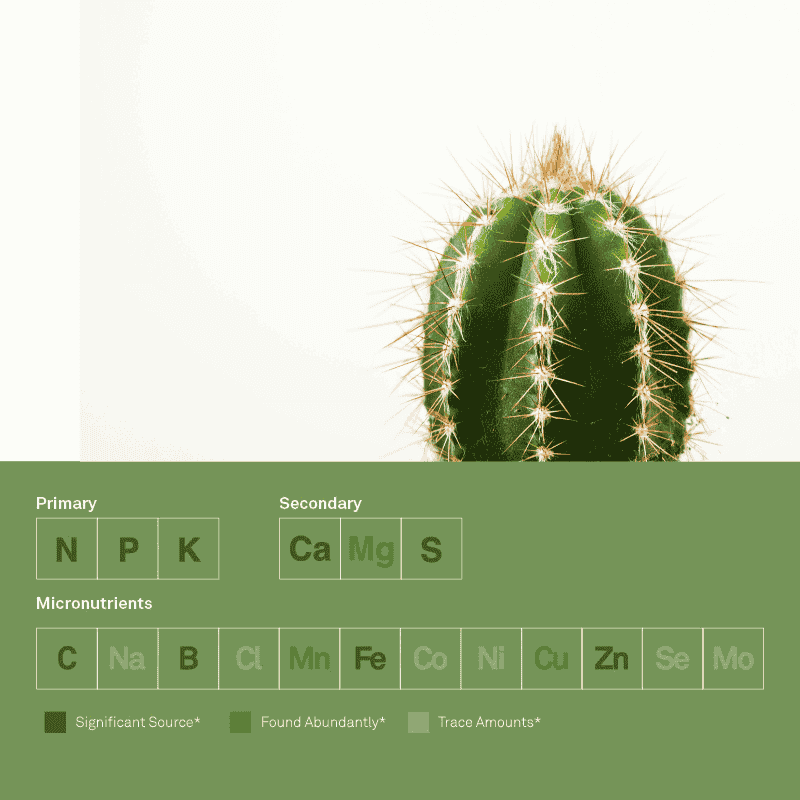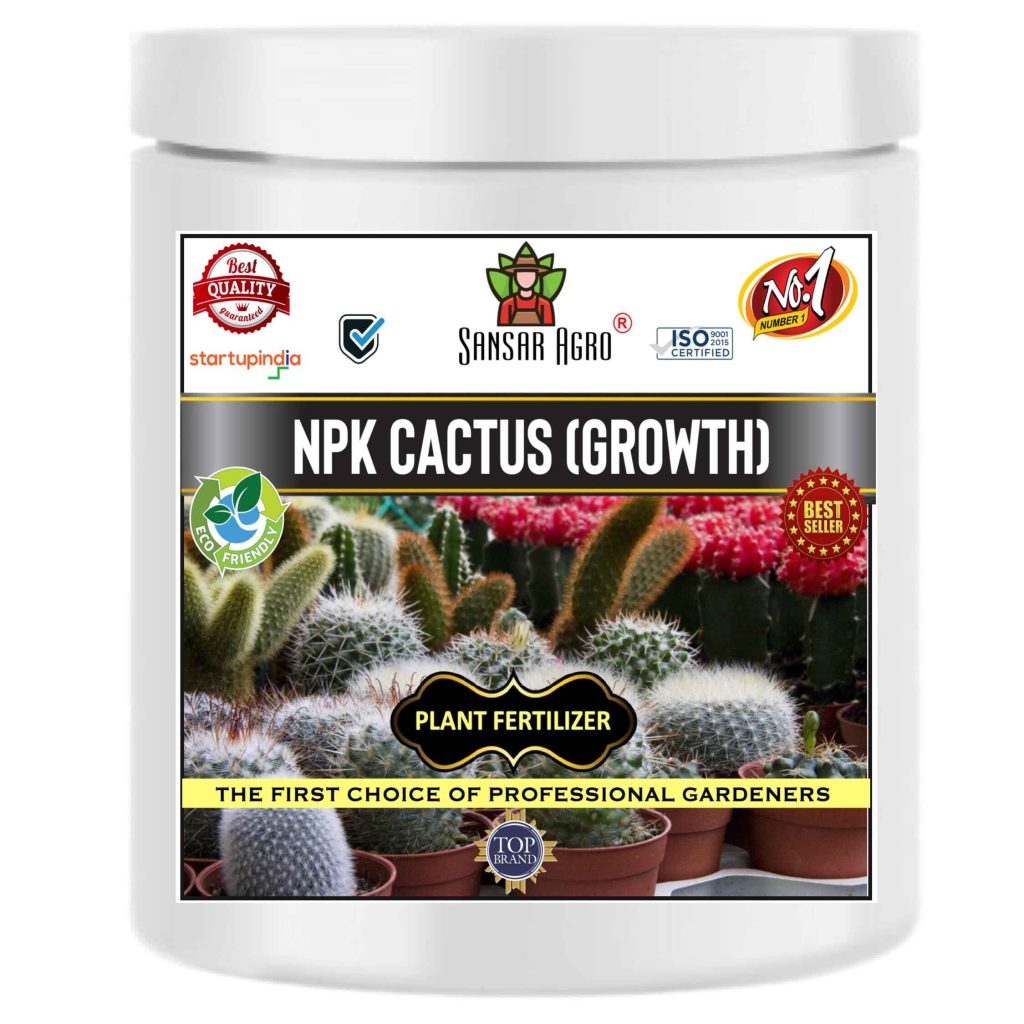When people think of cacti, they often picture rugged, spiky plants thriving in the harsh desert without any care. While it’s true that cacti are incredibly resilient, they still need proper nutrients to grow healthy, strong, and vibrant. Just like any other plant, cacti rely on essential nutrients for root development, disease resistance, and even blooming.
Many plant owners assume that because cacti are “survivors,” they don’t need much feeding. But here’s the reality—while they can tolerate poor soil, they won’t thrive without the right balance of nutrients. If you’ve ever wondered why your cactus isn’t growing as expected, why it looks dull, or why it’s not flowering, a lack of nutrients could be the culprit.
In this guide, we’ll break down what nutrients a cactus needs, why they matter, and how to provide them the right way. Whether you’re a beginner or a seasoned cactus lover, this article will help you understand how to keep your prickly friend happy and thriving—all in a simple, easy-to-follow way. Let’s dive in!
What Nutrients Are Needed for A Cactus?
Cacti may not require as much feeding as other plants, but they still depend on a handful of essential nutrients to grow strong, healthy, and resilient. Understanding what these nutrients are and how they support your cactus’s overall health is key to giving it the best care possible. So, let’s break down the nutrients your cactus craves, starting with the macronutrients, the nutrients that cacti need in larger amounts.
Macronutrients (Primary Nutrients)
These are the building blocks of cactus growth. Let’s take a closer look at the big three:
- Nitrogen (N)
Nitrogen is one of the most important nutrients for your cactus. It helps with the overall growth of the plant, especially in the early stages. It’s responsible for promoting healthy, green stems and leaves, giving your cactus that strong, vibrant appearance. However, too much nitrogen can encourage excessive growth, causing your cactus to become weak and spindly—definitely not what we want! The key is balance, so make sure your cactus gets just the right amount. - Phosphorus (P)
Phosphorus plays a major role in helping your cactus develop a strong root system. It also contributes to blooming and flowering, which is especially important for those cacti that do bloom, like the Christmas Cactus. A healthy root system means your cactus can better absorb water and nutrients, so make sure it’s getting enough phosphorus to set the foundation for strong growth. - Potassium (K)
Potassium is the nutrient that gives your cactus the strength to resist environmental stressors. From pest attacks to drought conditions, potassium helps your cactus stay strong and healthy. It also helps the plant form better cell structures, contributing to overall vitality.
These three primary nutrients are crucial for a cactus’s overall health, but they don’t work alone! Let’s dive into the secondary nutrients that play supporting roles in keeping your cactus thriving.

Secondary Nutrients
These nutrients are still vital for cactus health but are needed in smaller quantities than the primary ones. Here’s what you should know:
- Calcium (Ca)
Calcium is key for the structural integrity of your cactus. It strengthens cell walls and helps prevent stem rot, which is a common issue with cacti if they’re overwatered. Without enough calcium, the plant might struggle to maintain its shape and structure. - Magnesium (Mg)
Magnesium is a core component of chlorophyll, which is responsible for photosynthesis—the process through which your cactus produces its food. Without magnesium, your cactus may have trouble getting the energy it needs to grow and stay healthy. Plus, magnesium contributes to the rich green color of your cactus! - Sulfur (S)
Sulfur helps your cactus with protein formation and enzyme activation. While it’s used in smaller amounts, it still plays a key role in ensuring the plant can carry out its essential functions, like growth and nutrient absorption.
Micronutrients (Trace Elements)
Micronutrients are required in very small amounts, but don’t let their size fool you—they’re just as important for cactus health. Here’s what your cactus needs in tiny doses:
- Iron (Fe)
Iron is vital for producing chlorophyll and preventing chlorosis, a condition where the cactus turns yellow due to a lack of chlorophyll. Without iron, photosynthesis slows down, and the plant’s growth is stunted. - Zinc (Zn)
Zinc helps with enzyme activation and is necessary for the production of new cells. A zinc deficiency could lead to poor growth and poor health in your cactus. - Manganese (Mn)
Manganese assists in photosynthesis and the formation of roots. It also helps your cactus deal with stress and environmental changes, making it essential for keeping your cactus in top shape. - Copper (Cu)
Copper is needed for respiration and to help your cactus fight off diseases. Although required in very small amounts, copper plays a part in ensuring your cactus stays healthy and robust. - Boron (B)
Boron helps with the formation of new growth and the production of flowers. If your cactus isn’t blooming, a lack of boron could be the issue!
Best Fertilizers for Cactus Plants
Now that we’ve covered the essential nutrients your cactus needs, it’s time to talk about how to provide them. While cacti don’t require frequent fertilizing, choosing the right fertilizer can make all the difference in their health and growth. You will find plenty of fertilizers in your nearest store, just be sure about the ratio of the components of your fertilizer. In this section, we’ll walk through the best fertilizers for cacti and how to use them.
Choosing the Right NPK Ratio for Cacti
When selecting a fertilizer, look at the NPK ratio—this tells you the proportion of Nitrogen (N), Phosphorus (P), and Potassium (K) in the mix. For cacti, you’ll want a low-nitrogen, higher-phosphorus and potassium ratio. Here’s why:
- Low Nitrogen: Cacti don’t need much nitrogen since too much can lead to weak, spindly growth. So, look for a fertilizer with a relatively low nitrogen level.
- Higher Phosphorus and Potassium: These two nutrients are essential for strong roots, disease resistance, and vibrant blooms. A fertilizer with a slightly higher phosphorus and potassium content will help your cactus grow strong and resilient.
Some good ratios to look for are 5-10-10, 2-7-7, or something similar. These ratios give your cactus the nutrients it needs for solid root development and overall strength without encouraging excessive top growth.

Types of Fertilizers for Cacti
There are different types of fertilizers, and each one has its benefits:
- Slow-Release Fertilizer: This is an excellent option for beginners. Slow-release fertilizers provide a steady supply of nutrients over time. They’re easy to use because you mix them into the soil, and the fertilizer releases nutrients gradually, ensuring your cactus isn’t overfed. These are ideal for long-term care, as they reduce the risk of overfertilizing.
- Liquid Fertilizer: If you’re looking for faster results, liquid fertilizer is a great choice. Liquid fertilizers dissolve quickly in water and can be applied directly to the soil. They’re especially useful during the growing season (spring and summer) when your cactus is more active. Be sure to dilute the liquid fertilizer to avoid overfeeding.
- Organic Fertilizers: For those who prefer an eco-friendly approach, compost tea, worm castings, or fish emulsion are fantastic organic options. These provide all the essential nutrients while being gentle on your cactus. Plus, they enrich the soil with beneficial microorganisms that promote healthier plant growth.
Common Mistakes to Avoid When Fertilizing Cacti
Fertilizing cacti may seem straightforward, but there are a few common mistakes that can harm your plant. Let’s go through them so you can keep your cactus healthy and thriving.
Overfertilizing
Too much fertilizer can lead to weak, spindly growth and root damage.Stick to the recommended feeding schedule and always dilute liquid fertilizers.
Fertilizing During Dormancy
Cacti slow down in the winter, and fertilizing during dormancy can shock the plant and cause nutrient imbalances. Avoid fertilizing in the winter when your cactus is dormant. If you must, reduce the frequency and dilute the fertilizer.
Using the Wrong Fertilizer
Using fertilizer with too much nitrogen can cause weak growth and yellowing. Choose a low-nitrogen, higher-phosphorus, and potassium fertilizer with an NPK ratio like 5-10-10 or 2-7-7.
Applying Fertilizer Incorrectly
Uneven distribution of fertilizer can lead to nutrient imbalances and root burn. Apply fertilizer evenly, either mixed into the soil or diluted in water. Avoid getting it on the cactus itself.

Ignoring Soil Health
Poor soil leads to nutrient lock and ineffective fertilizer absorption. Use well-draining cactus soil to ensure proper nutrient absorption.
Using Fertilizer on Dry Soil
Fertilizing dry soil prevents proper nutrient absorption and can burn the roots. Always water your cactus before applying fertilizer to help the nutrients reach the roots effectively.
Conclusion
Providing your cactus with the right balance of nutrients is key to keeping it healthy, vibrant, and resilient. While these hardy plants can survive in tough conditions, they thrive when given proper care, including well-balanced fertilization, adequate watering, and the right soil mix. Understanding their nutrient needs helps prevent deficiencies that can lead to slow growth, discoloration, or weak stems.
The best approach? Observe your cactus closely! If you notice signs of nutrient deficiency—like yellowing, stunted growth, or weak blooms—adjust your feeding routine accordingly. A well-fed cactus is a happy cactus, and with the right care, yours will reward you with strong, healthy growth and even beautiful flowers.
What’s your go-to tip for keeping cacti healthy? Have you tried any organic fertilizers? Share your experience in the comments—I’d love to hear from you!

